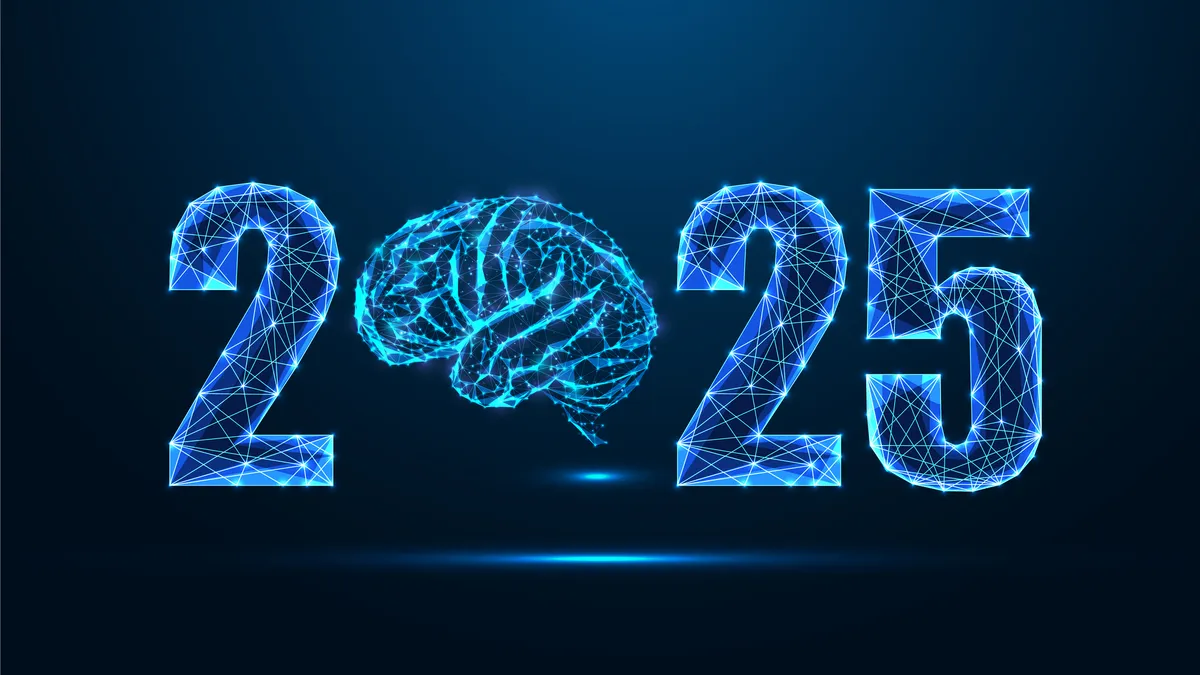The Industrial Internet, a term coined by GE, is the integration of complex physical machinery with networked sensors and software.
The next state of the Industrial Internet will enable artificial intelligence to make meaningful use of device-collected data. This near future state is generating excitement and receiving massive investments. According to a McKinsey report on disruptive trends, “Across the health-care applications we analyzed, Internet of Things technology could have an economic impact of $1.1 trillion to $2.5 trillion per year by 2025."
“As a precursor we are seeing simple bots provide useful, relevant information exactly when the person wants it," says Karin Beckstrom, innovation Lab senior product manager, ERT. “Using sensors to monitor critical health and vital statistics and using the data to identify and avoid potentially risky situations offers the most powerful use cases today."
There’s no question digital and connected health solutions – patient-centric systems that include IoT devices – remain the hottest trends in healthcare.
“Fitbit, Apple Watch, connected inhalers or injectors, and glucose monitors are good examples of devices that collect information about a patient’s health status or activity, and then process and store that information for an intervention — self, digital, or human — to improve the patient’s health," says ZS Managing Principal Mahmood Majeed. “Combining connected health with artificial intelligence, and advanced analysis through big data and novel technology, creates immense potential for patients. The Industrial Internet holds the promise of achieving the Triple Aim of improved quality outcomes, reduced costs, and better patient experience. This at times seems more attainable if patients hold the right information to manage their health, at the right time and with the right support."
Brian Longo, senior VP and general manager, Veeva Systems, says in today’s age of soaring clinical trial costs — where almost 70% of biopharmaceutical R&D costs are spent on clinical trials and the cost per patient has doubled since 2000 while data volume has risen by more than 50% — the Industrial Internet offers a powerful new way to improve the efficiency of trials.
“The Industrial Internet bridges real-time clinical data from wearables, connected lab equipment, and connected mobile technologies with other patient data generated during traditional studies," he says.
This is important, Mr. Longo says, because data are the cornerstone of clinical trials. Yet, both machine- and human-generated data from patients, clinicians, CROs, and sponsors all sit in silos. Life-sciences companies exert massive efforts to collect and manage all of this data, which increases costs and delays studies. The Industrial Internet essentially eliminates those siloes by closing information gaps, resulting in real-time access to reliable clinical data that, ultimately, drives smarter decisions, early intervention, and increased efficiency with less redundancy. It also helps companies identify failures much earlier in the clinical trial process. This is essential to reducing the cost of drug development and bringing life-altering medicines to market faster to improve patient outcomes.
The Industrial Internet makes healthcare more intelligent — transmitting key information to people and devices in real-time, via the cloud, says Kenneth Fisher, VP, director of technology, GSW Worldwide, an inVentiv Health company.
“Looking further into the future, we’ll ingest smart pills that contain a sensor the size of a grain of rice. The sensor monitors and transmits an incredible variety of data, from heart rate to stomach contents and medication levels. It doesn’t stop there — contact lens, clothing, skin patches, and more will supplant today’s diagnostics."
“For life sciences, smart medical devices will be at the forefront with embedded sensors providing real-time feedback for data capture used in analytics and machine learning," says Ramon Chen, chief marketing officer and head of product management, Reltio. “Pharma can benefit with more immediate feedback and diagnosis from the impact and efficacy of drugs either in trials or through ongoing commercial sales."
The impact of awareness about patients’ own health will continue to be significant as it relates to the Industrial Internet.
“Sensors that become more sophisticated in tracking not just one part of your health, but your entire health ecosystem is the reason why," says Patrick Richard, managing director, data science, inVentiv Health. “As the sensors become more sophisticated they create a low barrier for patients to track all kinds of health data in an intuitive way. I’m not talking about tracking your heartbeat on your last run either. This type of use of the Industrial Internet can connect to health systems, caregiver access, physician access, and preventative care all starting with the patient. The types of software being developed have the potential to sew this all together in a seamless patient experience."
In healthcare, it’s all about access to information and access to care. In the industrialized world, we take for granted that we can access healthcare professionals, pharmaceuticals, and labs, virtually on demand. In most parts of the world, however, this is still a struggle and integration will bring greater health equality, says Richard Strobridge, VP, healthcare, Entra Health, a CRF Health company.
“We are not just talking about medications anymore, connected devices bring information about how a particular drug is affecting an individual patient, where they are located geographically, and how that location might create particular environmental factors that have an impact on their health," he says. “From an environmental standpoint, there is a wealth of information about how things in our immediate surroundings affect us, but right now this information isn’t accessible. It will become readily available as devices become more and more connected. The next generation of mobile technology or 5G will be about connecting at faster speeds, but, at the same time, it will also be about supporting lower bandwidth, intermittent data. If we look at 5G, we are going to have the faster throughput that we have become used to as cellular technology has evolved, but we are also going to have narrowband technology, which will allow low bandwidth, long battery life devices to be connected. We’ll be at a point in the not too distant future where we will be getting data from lots of different connected devices because it will be very inexpensive."
It has been said that the Industrial Internet may bring a revolution of sorts in many industries, through the power of big data, says Peter Benton, president and chief operating officer, Worldwide Clinical Trials, but for that to happen, we have to move beyond big data and take steps to make the most of the tools, data, and insights, and then convert our insights to action.
“I think about the Industrial Internet and big data in three key areas: tools versus data, data versus insights, and insights versus actions," he says. “As an industry, I think we get too caught up in looking for new tools and software, even though it’s rarely the tool that’s the problem — or the solution. While having good data tools is important for a contract research organization, the integrity of the data and the processes needed for collecting it can overcome the limitations of any tool.
However, a tool cannot overcome the lack of solid and repeatable processes. People and processes power the clinical Industrial Internet, while tools are simply an enabler."
Pharmaceutical companies can incorporate advantages of the Industrial Internet to collect more data faster and be confident it is highly accurate, Ms. Beckstrom says.
“This could reduce the number of patients required and study duration," she says. “The Internet of Things will enhance insight into the everyday world of the patient, collecting continual vital statistics, environmental metrics, mobility and sleep information, and medication adherence. Combined, these data provide holistic patient and drug effect insight. Using artificial intelligence to spot potential adverse events before they happen or to identify proof of efficacy reduces the risk to patients and creates the potential to bring drugs to market faster."
A New Era in Transformative Integration
The Industrial Internet is already having a profound impact on consumers today.
“Companies are already offering smart devices that automate and therefore improve the productivity and efficiency of the entire value chain from manufacturing to customer service," Mr. Chen says. “Implications range from simply better customer service, to life-changing or saving capabilities through better health monitoring, diagnosis, and treatment."
For Mr. Richard what stands out is the ability to leverage data rich platforms and a predictive analytics approach to create experiences with more precision.
“If we start with that foundation the experiences we create will be more empathetic, satisfying, and drive a variety of audiences to take positive action," he says. “This can all be rooted in data that guides us all, so we don’t fall into the trap of creating something ground breaking that doesn’t connect with a respective audience."
The Industrial Internet goes beyond personalized medicine, it’s about personalized treatment, personalized care, and personalized motivation.
“Inexpensive, cost-effective communications and machine learning will drive efficiencies into the system that allow millions of people to be cared for in a more automated way, and without having to rely on the face-to-face consult model that we are accustomed to," Mr. Strobridge says. “From a pharmaceutical company standpoint, it’s going to have a huge impact on drug discovery and use. Making DNA sequencing devices wireless will drive automated processing of genomic information. Similarly, from a molecular diagnostics standpoint, using connected micro-assay type devices will enable samples to be processed rapidly and locally."
These samples can then be fed into automated processing systems and into databases that will provide immediate insights as well as interesting prospective information as time goes on. This will allow for more accurate ways to predict what the next step should be in terms of treatment or drug choice for a particular patient, all without the need for medical intervention.
“Today, it is easy for anyone to access millions of reference points via the Internet on any given subject," Mr. Strobridge says. “Extending this to the Industrial Internet, and having connected machines that are undertaking additional data collection and processing, will drive all manner of efficiencies. It’s plain to see that through the Internet we can drive access in the remotest areas. The overarching benefit is that an individual in the African plains, for example, will very soon receive the same level of care as a person in New York City or London."
Improved patient compliance and the overall experience is certainly the largest gain for life sciences, Mr. Majeed says.
“There’s the potential to improve the patient experience and outcomes by monitoring and reacting to patient progress in real time," he says. “At the same time, companies can better understand their patients, make predictions on future patients, and increase patient adherence. The Industrial Internet also holds promise for vastly improving the clinical trial process. Companies can accomplish better candidate identification and targeting, greater connected management, as well as an opportunity to prove the value with connected solutions."
Ms. Beckstrom says for the Industrial Internet to transform clinical trials by opening up new channels of information directly from patients and improving patient safety, the pharmaceutical industry must work to validate the sensors and the artificial intelligence code that draw meaning from the data. Data monitoring must move to real-time analysis to react and adapt each trial to the results being seen. (PV)















